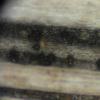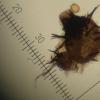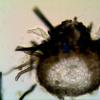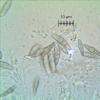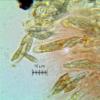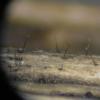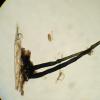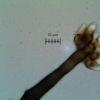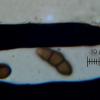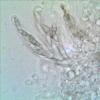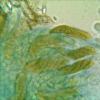
02-01-2016 10:11
 Maren Kamke
Maren Kamke
Hi everybody,first of all I wish you all a Happy N

02-01-2016 19:55
Elisabeth StöckliBonsoir,Récolte sur feuille de Hedera au sol:Apot

02-01-2016 12:02
 Hans-Otto Baral
Hans-Otto Baral
Hellodoes anybody have this literature?Cenangiopsi

01-01-2016 21:07
 Bernard CLESSE
Bernard CLESSE
Probablement une banalité mais j'aimerais avoir v

01-01-2016 22:09
 Bernard CLESSE
Bernard CLESSE
Bonsoir à tous,Autre espèce à confirmer si vous

01-01-2016 17:53
Thomas KehletHi.Spores 6-9 um.Danmark 23/12/2015.Totally unknow

31-12-2015 19:19
The ascomata, up to 1 mm in diameter, erumpent,gro

31-12-2015 16:06
Cvenkel MiranComments on this :photo ?Red: Coryne dubia (Ascoco
 Hi everybody,
Hi everybody,first of all I wish you all a Happy New Year 2016.
I found this species on moist lying cirsium-stalks. 0,15 mm diam. Around the neck covered with thickwalled, brown setae up to 62 x 5 µm. Ascospores 13-16 x 3,5-4 µm, second cell enlarged, hyaline, 3-septate, Asci 50 x 9, biseriate, IKI negative with 8 spores. There is an anamorphe on the same stalk, 260 x 11 µm, septate, Conidia 18-19 x 6,5-7, brown, 3-septate and verruculose.
Regards, Maren

as for any pyrenomycete s. l. the first thing to check is whether asci are uni- or bitunicate. They seem to be bitunicate on photo 6. Are ascospores hyaline or greyish as suggested on your photos?
I think of a Capronia but let's wait for Gernot's opinion.
Cheers,
Jacques

this is clearly Capronia. Did you test in KOH+IKI? It should change blue.
I think its near C. pilosella.
regards,
björn

thank you very much, it is indeed a Capronia species, the asci are bitunicate, the ascospores are grey, not hyaline, how I first thought. After KOH-treatment changes the colour to blue with IKI.
I think it could be C. pilosella.
Thanks a lot
Regards, Maren
